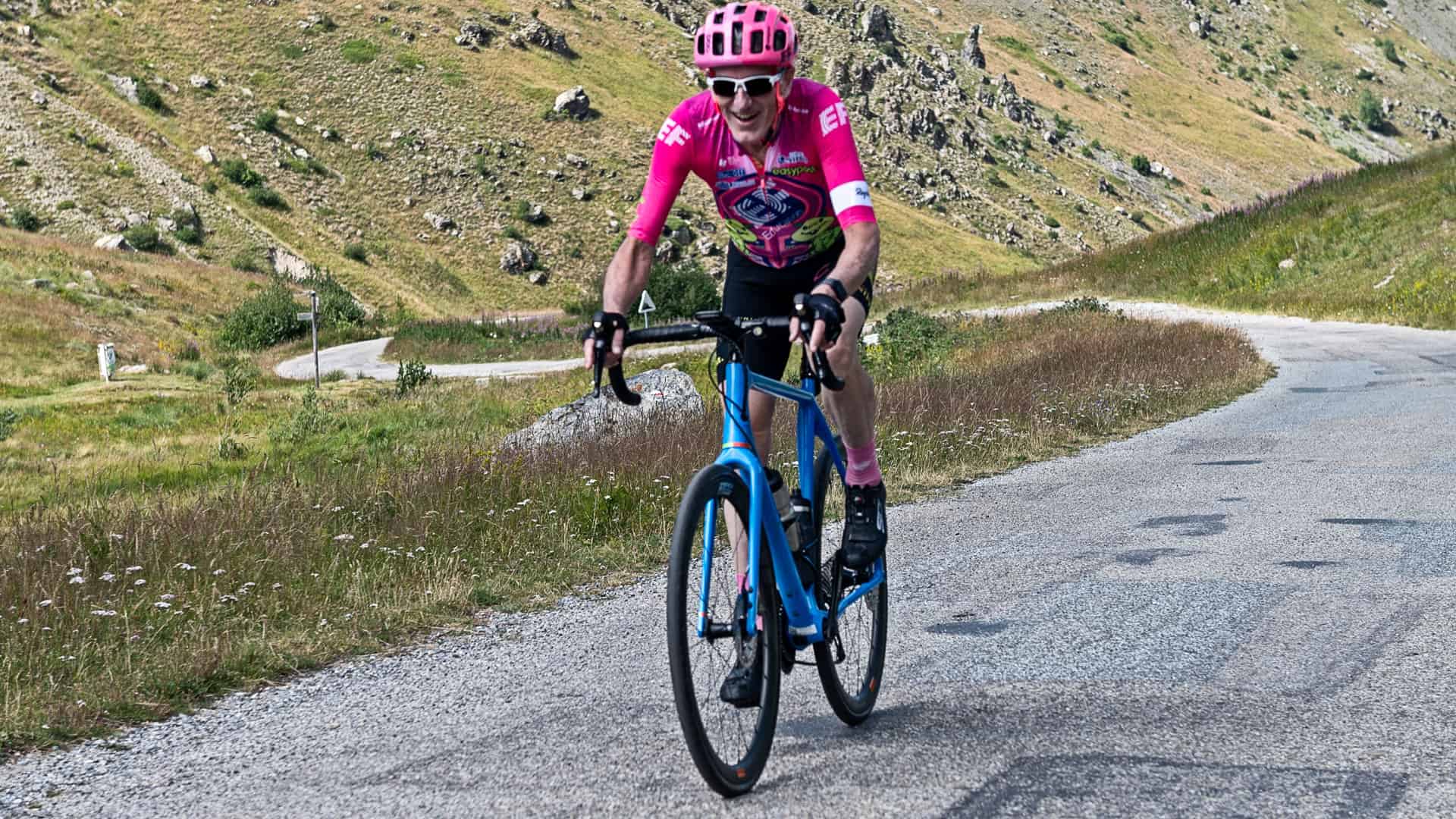The most watched and publicized bike race in the world would be the Tour de France. The Tour de France is only one of many major pro races each year from tours to one day classics. However the Tour is the best known cycling event around the globe, even to those generally not interested in cycling.
The Tour de France was created by L’Auto magazine, a French newspaper. The original aim was to increase sales and circulation of the paper. The plan was a five-week tour from May 31 to July 5 1903; however with attracting only 15 entrants, it was cut to 19 days with the date changed to July 1 to 19, with the offer of a daily allowance the first Tour attracted 60 entrants. There were no support cars (vastly different from today) and started in Montgeron. There were six stages with the average length being 400km the longest stage was 471km. Only 21 riders completed the Tour with Maurice Garin winning.
The Tour not surprisingly with the super human effort required captured peoples admiration, as such the following in the media and the roadside crowds swelled. In 1930, radio was exploring live broadcasting. In 1948, French television attempted a first external live broadcast from the finish at Paris. Today the event is now broadcast in 186 countries around the world. In Australia SBS broadcast each stage live and has daily highlights at 6pm.
The number of fans estimated on the roadside at the tour now is 12 to 15 million. To obtain a prime position on a hill climb requires fans camping out for days in advance. The roadside crowds are entertained by the publicity caravan or parade. In 1930 the Tour de France caravan was created in response to strictly financial imperatives. The “caravan” is now a 20 km-long procession with 200 brightly decorated vehicles, which is approx 45minutes of rolling entertainment handing out about 15 million gifts.
The Tour each year tries to pass through all the regions of France with towns bidding to host a departure or finish. This is a very prestigious and lucrative event for a town. Each year the Tour runs in the reverse direction from the previous. Alps then Pyrenees one year then Pyrenees then Alps the following year. The 2010 Tour went from Alps to Pyrenees and was the 100th anniversary year of the first inclusion of the Pyrenees on the tour, and emphasized the Pyrenees, with two ascents of the Col du Tourmalet.
The race route typically has stages in the first week that are more suited to sprinters, the second and third week the climbers have their chance with mountain stages and a few flat stages where the riders transition between Frances two major mountain ranges. The finish is now always in Paris on the Champs-lyses.
Tour de France – The Race
The Tour is a stage race, each stage being one race per day. If a rider fails to complete a stage they are out of the Tour and not able to start the next stage – regardless of circumstance.
The time each rider takes to complete each stage is accumulated. Sometimes there are time bonuses awarded for the place getters of each stage. The 2010 Tour did not have such time bonuses. Riders who finish in the same group are awarded the same time. Two riders are said to have finished in the same group if there is less than the length of a bike between them. A rider who crashes in the last km is given the time of the group in which he would have finished.
The ranking of riders by accumulated time is known as the General Classification. The winner is the rider with the least accumulated time after the final day.
There are some famous stages in the Tour de France. One of the most famous is the final stage on the Champs-lyse, the winning of the final stage is ever tour riders dream. It is unusual to attack the race leader on the final stage, however the sprinters jersey is often decided on the last stage with valuable points up for grabs.
Other famous stages are in the hills – particularly Alpe d’Huez, providing a stage finish in most Tours including the Time Trial in 2004. Another famous mountain stage is the climb of Mont Ventoux, often claimed to be the hardest in the Tour due to the harsh conditions. The Tour usually features only one of these two climbs in a year.
Rules
Apart from the regular cycling and drug rules the Tour has limits imposed by the international regulations, which stipulate that the total mileage of the Tour must not exceed 3,500 km, (interesting that this years Tour is 3,600km!) spread over 21 days’ racing (2 days of rest compulsory), during which the distance of 225 km cannot be exceeded more than twice.
Also there are time limits on stages, if a rider does not complete a stage within a set amount of time after the stage winner then they are eliminated. This is of particular importance to the sprinters in the tour that tend to struggle when the stages start getting hilly. Although the race director (Commissaire) generally use their discretion on this ruling as they would not want to eliminate too many riders.
Teams
As with most pro cycling races, competitors enter as part of a team. The race consists of 20 to 22 teams with nine riders each. Not all ProTour teams will get the opportunity to race the Tour de France. The teams that were guaranteed entry to the 2010 Tour were the teams with ProTour status as of September, 2008 when an agreement was signed between organisers of the Grand Tours, notably Tour de France organizer Amaury Sport Organization (A.S.O.), and the International Cycling Union (UCI).
Each team, known by the name of its sponsor, wears a distinctive jersey. Most teams are made up of a single rider going for GC (general classification), possibly a rider looking at sprints or climbs, the rest really are domestics. A domestic is the rider that gives there all for the best of the team. They are used to provide a lead out for a sprint, collect water from the support car for the rest of the team, or even give their bike up for another rider until the support car comes to the rescue.
The GC rider normally wears number 1 in the team, so if the team is allocated numbers 31-39 then the GC rider is 31 being the leader of the team. No rider wears jersey the number 0 i.e. 10, 20, 30 etc.
A team normally will base themselves around a particular rider aiming for a particular outcome.
Although the Tour de France is an individual event meaning a rider wins the tour and jersey not the team, the team is needed to assist – watch any of Lance Armstrong’s tours and see how close his team is around him protecting him, leading out etc. There is a teams prize in the tour for the best team but that is not what the tour is known for – in fact I can’t tell you who won that last year without looking it up.
It’s not uncommon for a GC rider to ride for less than two hours of accumulative time at the front of the race over the entire length of the tour. This is made up of the individual time trials, then end of mountain stages and the sprint finishes. All the rest of the time he will be sheltered either behind one or several of his team riders.
The Tour de France has been won 36 times by a French rider (5 times by Bernard Hinault and 5 times by Jacques Anquetil), 18 times by a Belgian (5 times by Eddy Merckx), 13 times by Spanish riders (Miguel Indurain 5 times and Alberto Contador 3 times) and 10 times by an American (7 of these by Lance Armstrong – but his wins have been revoked due to his admission to doping.).
Eddy Merckx – rode the Tour 7 times, winning 5, second once and winning a total of 34 stages (this is the most amount of stage wins by any Tour de France rider).
Lance Armstrong rode the Tour 13 times, winning 7 consecutive years (1999 to 2005) and winning 26 stages (22 individual and 4 team time trials).
Tour de France Jerseys
There are 4 jerseys in the tour – yellow, green, polka dot and white. Most people know about the yellow but possibly not all 4 unless you are an avid follower. Each jersey is awarded to the rider that is winning the related category at the end of each stage.
The maillot jaune (yellow jersey) is for the rider that is leading the race. It is the rider that has taken the least amount of time to complete the tour.
In 1933, the race’s best climbers were rewarded with the King of the Mountains competition, but it was not until 1975 that the leading rider in the classification wore the distinctive polka dot jersey. The polka dot jersey is white with red spots for the King of the Mountains (KOM). Again they are allocated to King of the Mountains (KOM) Primes on mountain stages where points awarded for the first 3 riders.
To celebrate the 50th anniversary of the race in 1953, the maillot vert (green jersey) competition was started. The green jersey is awarded for the rider this is the most points earned for sprints. There are allocated sprints during the tour, where points awarded for the first 3 riders for intermediate sprints and for tour stages.
In 1975, the Tour organisers launched an award for the leading young cyclist, awarding a white jersey to the leading cyclist under 26 years of age in the general classification. This is based on the same principle as the yellow jersey but the rider is less than 26 years old on January 1 of the year the Tour is ridden.
Eddy Merckx in 1969 is the only rider to win the King of the Mountains, the points and the overall title in the same year. He would have won the young rider title as well had it existed at the time.
There is 1 other individual ‘award’ during the Tour, which is the most aggressive rider. This rider does not get a jersey but wears a number printed white-on-red instead of black-on-white in the next stage.
The team prize is assessed by adding the times of each team’s best three riders each day. The competition does not have its own jersey but since 2006 the leading team has worn numbers printed black-on-yellow instead of black-on-white.
As in all road races, national and world champions do not wear their ordinary team kit but their world or national championship jerseys when competing in the appropriate race: the time-trial champion will wear their Time Trial champion kit in the time-trial, while the national and world champions will wear their appropriately decorated kit the road race in massed stages.
Links:
Images sourced from: http://upload.wikimedia.org/wikipedia/commons/8/86/DSCF1094.JPG






Leave A Comment